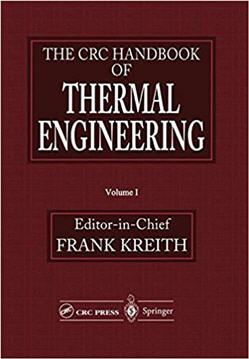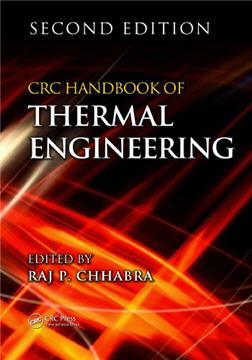
Sunday, May 31, 2020
Saturday, May 30, 2020
Sizing Domestic Water Heater Systems | DtiCorp.com
Sizing Domestic Water Heater Systems | DtiCorp.com
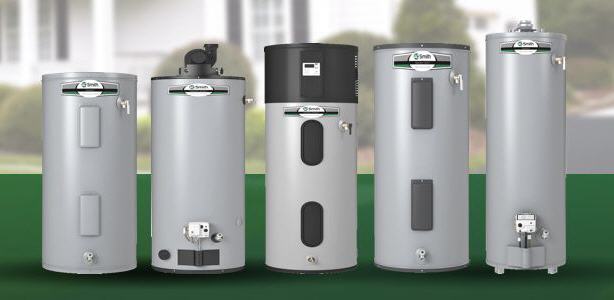

Sizing a domestic water heater system constitutes an art
form more than an exact science. For anything other than a small residential
system, you cannot simply go to a table or chart and make your selection. Codes
provide only generalizations such as “Hot and cold water shall be supplied to
all sinks, lavatories, showers, etc.” They do not indicate how much hot water
is required. Codes do, however, give information about pipe materials and
minimum and maximum flow rates to fixtures (combined cold and hot water), and
they address safety concerns such as maximum temperatures and required safety
devices.
form more than an exact science. For anything other than a small residential
system, you cannot simply go to a table or chart and make your selection. Codes
provide only generalizations such as “Hot and cold water shall be supplied to
all sinks, lavatories, showers, etc.” They do not indicate how much hot water
is required. Codes do, however, give information about pipe materials and
minimum and maximum flow rates to fixtures (combined cold and hot water), and
they address safety concerns such as maximum temperatures and required safety
devices.
A number of factors must be considered when sizing a system,
and experience plays a big part. Every system is different, so the path that
leads to final selection is also different. Two buildings can be physically the
same (i.e., have the same number of fixtures), but the quantity of water
required may be different if the buildings will be occupied by different groups
of people. For instance, an apartment building for older people would have a
different use profile than one that primarily houses families.
and experience plays a big part. Every system is different, so the path that
leads to final selection is also different. Two buildings can be physically the
same (i.e., have the same number of fixtures), but the quantity of water
required may be different if the buildings will be occupied by different groups
of people. For instance, an apartment building for older people would have a
different use profile than one that primarily houses families.
Information Gathering
So how do you size and select a domestic hot water system?
The first step is to collect the information needed to define the system parameters
and narrow the options. Some of the information will be readily available, but
some may require a little digging. The following is a fairly long list of
questions, but not all of them apply to every situation.
The first step is to collect the information needed to define the system parameters
and narrow the options. Some of the information will be readily available, but
some may require a little digging. The following is a fairly long list of
questions, but not all of them apply to every situation.
• Where is the building located?
• What code or codes should be followed?
• Do any local amendments apply?
• Does the building’s owner or operator have any unusual
requirements?
requirements?
• Are there any other hot water systems in the building?
• What is the area used for?
• How many plumbing fixtures
will there be?
will there be?
• What kind of fixtures will there be?
• Who will be using them?
• Are there any high-usage fixtures, such as hot tubs or
laundry machines?
laundry machines?
• Are there plans to expand the facility in the future?
• Will there be a laundry or health club area?
• If so, how many areas will be used simultaneously?
• How much space is available for the system?
• What energy sources are available? (Natural gas? Propane?
Steam? Hot water? Fuel oil? Heat reclamation?)
Steam? Hot water? Fuel oil? Heat reclamation?)
• Which energy source is most economical for the location?
• Where in the building will the equipment be placed?
• Will flues or combustion air be a problem, due to the
location?
location?
• What is the cold water source?
• What is the water hardness?
• Will the system be inactive for long periods of time?
Calculations
With the information you have gathered, you can calculate
the load (i.e., recovery rate and storage volume) required for the facility.
Once again, this is not a straightforward process. There are several methods
for calculating the load of a building. One method is not always better than another,
although one may be better suited for the particular application. Several methods
are available; most of them are from the American Society of Plumbing Engineers
(https://www.aspe.org/).
the load (i.e., recovery rate and storage volume) required for the facility.
Once again, this is not a straightforward process. There are several methods
for calculating the load of a building. One method is not always better than another,
although one may be better suited for the particular application. Several methods
are available; most of them are from the American Society of Plumbing Engineers
(https://www.aspe.org/).
Heater System
Selection
Selection
With the demand and storage volume established, the next
step is to select the type of equipment to be used. This is another point at
which experience plays a key part. Several factors have to be weighed—the most
practical or economical fuel source, expandability, available space, location
with respect to roof and wall locations, heater efficiency, budget constraints,
and owner preference are just a few of them. Add the various types of equipment
available, and you may find that equipment selection can be a somewhat
intimidating venture. The best approach is to address each of the parameters,
and narrow the possibilities to one or two that fit the application. Make the
final selection based on your experience.
step is to select the type of equipment to be used. This is another point at
which experience plays a key part. Several factors have to be weighed—the most
practical or economical fuel source, expandability, available space, location
with respect to roof and wall locations, heater efficiency, budget constraints,
and owner preference are just a few of them. Add the various types of equipment
available, and you may find that equipment selection can be a somewhat
intimidating venture. The best approach is to address each of the parameters,
and narrow the possibilities to one or two that fit the application. Make the
final selection based on your experience.
Safety Devices
All HVAC systems are
required to have safety devices. Water heaters and storage tanks are required
to have temperature and pressure (T&P) relief devices, which are intended
to prevent catastrophic failure of the vessels. If the system fails, T&P
devices relieve pressure due to expanding water inside the storage tank and hot
water system. When the building service has a backflow prevention device on it,
often the code requires a thermal expansion tank on the cold water inlet to the
heaters; this compensates for the expanding water within the system. It does
not affect the operation of the T&P relief valve. Many codes also require
that the maximum temperature allowed at a lavatory or shower not to exceed
115°F. To properly maintain the temperature, a thermostatic mixing valve is
required. The thermostat on the heater most often is not considered an
acceptable temperature regulatory device. The mixing valves can be located at a
central point or at the individual fixtures.
required to have safety devices. Water heaters and storage tanks are required
to have temperature and pressure (T&P) relief devices, which are intended
to prevent catastrophic failure of the vessels. If the system fails, T&P
devices relieve pressure due to expanding water inside the storage tank and hot
water system. When the building service has a backflow prevention device on it,
often the code requires a thermal expansion tank on the cold water inlet to the
heaters; this compensates for the expanding water within the system. It does
not affect the operation of the T&P relief valve. Many codes also require
that the maximum temperature allowed at a lavatory or shower not to exceed
115°F. To properly maintain the temperature, a thermostatic mixing valve is
required. The thermostat on the heater most often is not considered an
acceptable temperature regulatory device. The mixing valves can be located at a
central point or at the individual fixtures.
Experience is vital to properly sizing a domestic water
heater system. There is only one way to get that experience—by trying new
things. When you size a system in a building that is a little different from
your norm, try out a couple of different methods to calculate the size. Talk to
some of your coworkers or perhaps a sales representative. Look into the ways
different approaches to the same problem yield different results. You may be
surprised to learn that a tried-and-true method is just not the best fit for
the system.
heater system. There is only one way to get that experience—by trying new
things. When you size a system in a building that is a little different from
your norm, try out a couple of different methods to calculate the size. Talk to
some of your coworkers or perhaps a sales representative. Look into the ways
different approaches to the same problem yield different results. You may be
surprised to learn that a tried-and-true method is just not the best fit for
the system.
Financial Markets and Institutions 6th Edition, ISBN-13: 978-0077861667 - ebookschoice.com
Financial Markets and Institutions 6th Edition, ISBN-13: 978-0077861667 - ebookschoice.com: Financial Markets and Institutions 6th Edition, ISBN-13: 978-0077861667 [PDF eBook eTextbook] Series: The Mcgraw-Hill / Irwin Series in Finance, Insurance and Real Estate 768 pages Publisher: McGraw-Hill Education; 6 edition (October 27, 2014) Author(s): Anthony Saunders, Marcia Millon Cornett Language: English ISBN-10: 0077861663 ISBN-13: 978-0077861667 Financial Markets and Institutions, 6e offers a unique analysis of the risks faced by investors and savers interacting through financial institutions and financial markets, as well as strategies that can …


Neuroanatomy in Clinical Context: An Atlas of Structures, Sections, Systems, and Syndromes 9th Edition, ISBN-13: 978-1451186253 - ebookschoice.com
Neuroanatomy in Clinical Context: An Atlas of Structures, Sections, Systems, and Syndromes 9th Edition, ISBN-13: 978-1451186253 - ebookschoice.com: Neuroanatomy in Clinical Context: An Atlas of Structures, Sections, Systems, and Syndromes 9th Edition, ISBN-13: 978-1451186253 [PDF eBook eTextbook] Series: Neuroanatomy: An Atlas of Strutures, Sections, and Systems 368 pages Publisher: LWW; Ninth, North American edition (May 31, 2014) Author(s): Duane E. Haines Language: English ISBN-10: 1451186258 ISBN-13: 978-1451186253 Neuroanatomy in Clinical Context , Ninth Edition provides everything the student needs to master the anatomy of the central nervous system, all in a clinical setting. …
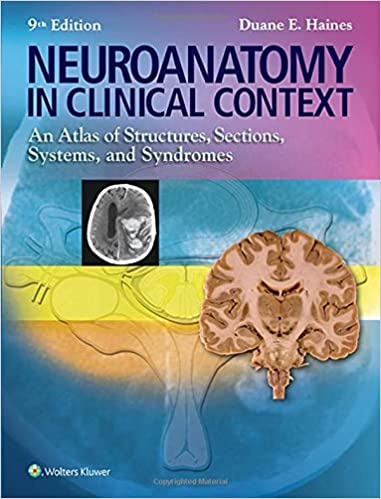

American Government: Institutions and Policies 13th Edition, ISBN-13: 978-1305956346 - ebookschoice.com
American Government: Institutions and Policies 13th Edition, ISBN-13: 978-1305956346 - ebookschoice.com: American Government: Institutions and Policies Brief 13th Edition, ISBN-13: 978-1305956346 [PDF eBook eTextbook] 400 pages Publisher: Cengage Learning; 13 edition (January 1, 2017) Language: English ISBN-10: 1305956346 ISBN-13: 978-1305956346 This popular brief text for the American Government course emphasizes the historical development of the American political system, who governs, and to what ends. Thorough yet concise, the thirteenth edition of AMERICAN GOVERNMENT: INSTITUTIONS AND POLICIES, BRIEF VERSION, offers insightful coverage of all aspects of U.S. …


Principles and Practice of Phytotherapy: Modern Herbal Medicine 2nd Edition, ISBN-13: 978-0443069925 - ebookschoice.com
Principles and Practice of Phytotherapy: Modern Herbal Medicine 2nd Edition, ISBN-13: 978-0443069925 - ebookschoice.com: Principles and Practice of Phytotherapy: Modern Herbal Medicine 2nd Edition, ISBN-13: 978-0443069925 [PDF eBook eTextbook] 1056 pages Publisher: Churchill Livingstone; 2 edition (January 14, 2013) Author(s): Kerry Bone, Simon Mills Language: English ISBN-10: 9780443069925 ISBN-13: 978-0443069925 The authoritative and comprehensive modern textbook on western herbal medicine – now in its second edition This long-awaited second edition of Principles and Practice of Phytotherapy covers all major aspects of herbal medicine from fundamental concepts, traditional use and …


Database Systems: Design, Implementation, & Management 13th Edition, ISBN-13: 978-1337627900 - ebookschoice.com
Database Systems: Design, Implementation, & Management 13th Edition, ISBN-13: 978-1337627900 - ebookschoice.com: Database Systems: Design, Implementation, & Management 13th Edition, ISBN-13: 978-1337627900 [PDF eBook eTextbook] 816 pages Publisher: Cengage Learning; 13 edition (January 1, 2018) Author(s): Carlos M. Coronel Language: English ISBN-10: 1337627909 ISBN-13: 978-1337627900 Database skills are among the most in-demand IT skills today. Now you can gain a solid foundation in database design and implementation with the practical, easy-to-understand approach in the market-leading DATABASE SYSTEMS: DESIGN, IMPLEMENTATION, AND MANAGEMENT, 13E. Diagrams, illustrations, and tables clarify …
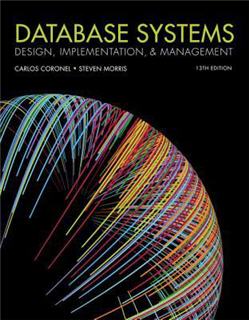

Motor Control and Learning: A Behavioral Emphasis 6th Edition, ISBN-13: 978-1492547754 - ebookschoice.com
Motor Control and Learning: A Behavioral Emphasis 6th Edition, ISBN-13: 978-1492547754 - ebookschoice.com: Motor Control and Learning: A Behavioral Emphasis 6th Edition, ISBN-13: 978-1492547754 [PDF eBook eTextbook] 552 pages Publisher: Human Kinetics, Inc.; Sixth edition (February 19, 2018) Author(s): Richard A. Schmidt, Tim Lee, Carolee Winstein, Gabriele Wulf, Howard Zelaznik Language: English ISBN-10: 1492547751 ISBN-13: 978-1492547754 Motor Control and Learning, Sixth Edition With Web Resource, focuses on observable movement behavior, the many factors that influence quality of movement, and how movement skills are acquired. The text examines the …


Texas Politics: Governing the Lone Star State 7th Edition, ISBN-13: 978-0367028121 - ebookschoice.com
Texas Politics: Governing the Lone Star State 7th Edition, ISBN-13: 978-0367028121 - ebookschoice.com: Texas Politics: Governing the Lone Star State 7th Edition, ISBN-13: 978-0367028121 [PDF eBook eTextbook] 356 pages Publisher: Routledge; 7 edition (March 11, 2019) Author(s): Cal Jillson Language: English ISBN-10: 0367028123 ISBN-13: 978-0367028121 The seventh edition of this popular text has been expanded and updated to better fit the needs of a stand-alone Texas politics course. Jillson continues to approach the politics of the Lone Star State from historical, developmental, and analytical perspectives, while giving students …


The Pancreas: An Integrated Textbook of Basic Science, Medicine, and Surgery 3rd Edition, ISBN-13: 978-1119188391 - ebookschoice.com
The Pancreas: An Integrated Textbook of Basic Science, Medicine, and Surgery 3rd Edition, ISBN-13: 978-1119188391 - ebookschoice.com: The Pancreas: An Integrated Textbook of Basic Science, Medicine, and Surgery 3rd Edition, ISBN-13: 978-1119188391 [PDF eBook eTextbook] 1216 pages Publisher: Wiley-Blackwell; 3 edition (April 23, 2018) Author(s): Hans G. Beger Language: English ISBN-10: 1119188393 ISBN-13: 978-1119188391 This brand new updated edition of the most comprehensive reference book on pancreatic disease details the very latest knowledge on genetics and molecular biological background in terms of anatomy, physiology, pathology, and pathophysiology for all known disorders. Included …
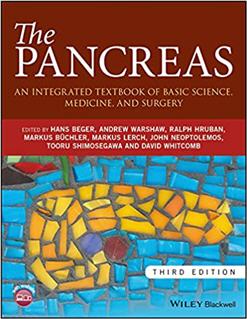

Fundamentals of Nuclear Science and Engineering 3rd Edition, ISBN-13: 978-1498769297 - ebookschoice.com
Fundamentals of Nuclear Science and Engineering 3rd Edition, ISBN-13: 978-1498769297 - ebookschoice.com: Fundamentals of Nuclear Science and Engineering 3rd Edition, ISBN-13: 978-1498769297 [PDF eBook eTextbook] 660 pages Publisher: CRC Press; 3 edition (September 29, 2016) Language: English ISBN-10: 1498769292 ISBN-13: 978-1498769297 Fundamentals of Nuclear Science and Engineering, Third Edition, presents the nuclear science concepts needed to understand and quantify the whole range of nuclear phenomena. Noted for its accessible level and approach, the Third Edition of this long-time bestselling textbook provides overviews of nuclear physics, nuclear power, …


Wednesday, May 27, 2020
Doing A Good Job In Preparing Students For College
Doing A Good Job In Preparing Students For College


To improve school quality and raise performance, educational leaders at the district,
state, and federal level are faced with the challenge to:
state, and federal level are faced with the challenge to:
• Address Socioeconomic Disparity.
Thirty percent of the children in urban areas are poor compared to 18% for the
nation as a whole. Urban schools are twice as likely to enroll minority and
immigrant children than the national average. When compared to the national
level, students in urban areas are three times as likely to live in extremely
impoverished neighborhoods.
Thirty percent of the children in urban areas are poor compared to 18% for the
nation as a whole. Urban schools are twice as likely to enroll minority and
immigrant children than the national average. When compared to the national
level, students in urban areas are three times as likely to live in extremely
impoverished neighborhoods.
• Improve Teaching and Learning.
Urbanity and poverty intensify the magnitude of constraints on teaching and
learning. While only 23% of the fourth graders in high poverty schools
performed at the basic level or higher in the national reading tests, almost
70% of their peers did so in schools with less poverty outside the urban
setting. A substantial number of teachers in urban and rural settings are
teaching in areas in which they did not earn a minor or a major in college.
Urbanity and poverty intensify the magnitude of constraints on teaching and
learning. While only 23% of the fourth graders in high poverty schools
performed at the basic level or higher in the national reading tests, almost
70% of their peers did so in schools with less poverty outside the urban
setting. A substantial number of teachers in urban and rural settings are
teaching in areas in which they did not earn a minor or a major in college.
• Manage the technological gap.
Digital divide between the "haves" and the "have-nots" will
widen if public schools lag behind in developing learning opportunities to meet
the technological challenge.
Digital divide between the "haves" and the "have-nots" will
widen if public schools lag behind in developing learning opportunities to meet
the technological challenge.
• Sustain Leadership Quality. Urban
superintendents have an average tenure of less than 3 years. Top talents are
leaving the public sector for the fast-growing sector of e-commerce.
superintendents have an average tenure of less than 3 years. Top talents are
leaving the public sector for the fast-growing sector of e-commerce.
• Regain public confidence. While
68% of the urban school board members rated their schools as A and B, only 47%
of the urban public did. The public seemed half as likely than the board
members to agree that the schools were "doing a good job" in preparing
students for college, keeping violence and drugs out of schools, and teaching
children who don't speak English.
68% of the urban school board members rated their schools as A and B, only 47%
of the urban public did. The public seemed half as likely than the board
members to agree that the schools were "doing a good job" in preparing
students for college, keeping violence and drugs out of schools, and teaching
children who don't speak English.
To address these complex tasks more
effectively, policymakers have adopted various reform models to change the
school's operational processes and its governance structure. Two emerging
models of school governance reform that are designed to improve student
performance within the public educational sector are: (1) "integrated
governance," a term that we developed based on our research, and (2)
charter school reform. These two models demonstrate the range of institutional
options that policymakers can select in their efforts to improve accountability
and management.
effectively, policymakers have adopted various reform models to change the
school's operational processes and its governance structure. Two emerging
models of school governance reform that are designed to improve student
performance within the public educational sector are: (1) "integrated
governance," a term that we developed based on our research, and (2)
charter school reform. These two models demonstrate the range of institutional
options that policymakers can select in their efforts to improve accountability
and management.
The two emerging models differ along
several design dimensions. Integrated governance adopts a "corporate
model" to improve school management and finance, it seeks to raise
academic standards for all students system-wide, it applies sanctions and
targets support to turn around low-performing schools, and its power is decentralized
and governed by system-wide standards. The charter school model adopts
consumer-based preferences to promote competition, it seeks to raise
performance and promote alternative assessment, to turn around low performing
schools it uses site-specific strategies that may be part of a reform network,
and there is strong autonomy at the school level.
several design dimensions. Integrated governance adopts a "corporate
model" to improve school management and finance, it seeks to raise
academic standards for all students system-wide, it applies sanctions and
targets support to turn around low-performing schools, and its power is decentralized
and governed by system-wide standards. The charter school model adopts
consumer-based preferences to promote competition, it seeks to raise
performance and promote alternative assessment, to turn around low performing
schools it uses site-specific strategies that may be part of a reform network,
and there is strong autonomy at the school level.
Whereas integrated governance relies
on system-wide institutions and standards to target low performance, charter
schools focus innovation and promote alternative assessment in a market-like
environment. Understanding these emerging models will help in developing the
proper balance of various reform strategies.
on system-wide institutions and standards to target low performance, charter
schools focus innovation and promote alternative assessment in a market-like
environment. Understanding these emerging models will help in developing the
proper balance of various reform strategies.
Integrated governance maintains a
proper balance between site-based decision-making and system-wide performance-based
accountability. It focuses on district-level capacity to reduce institutional
fragmentation and raise academic accountability. This kind of restructuring is
based on:
proper balance between site-based decision-making and system-wide performance-based
accountability. It focuses on district-level capacity to reduce institutional
fragmentation and raise academic accountability. This kind of restructuring is
based on:
• a clear vision
of education accountability that focuses on
academic standards and performance outcomes;
of education accountability that focuses on
academic standards and performance outcomes;
• strong political support to
improve the operation of the school system;
improve the operation of the school system;
• district-level capacity to
intervene in failing schools; and
intervene in failing schools; and
• a mix of direct intervention and
support strategies to meet the challenges faced by urban schools.
support strategies to meet the challenges faced by urban schools.
This emerging model is likely to
spread as an increasing number of mayors have gained control over the public
schools. Mayoral control may not necessarily turn into integrated governance
reform; for example, mayors may be reluctant to play an active role even though
they are granted the legislative authority; mayoral control may be constrained
by state legislative compromise; or civic leadership may be the driving force
behind a more focused, performance-based accountability framework.
spread as an increasing number of mayors have gained control over the public
schools. Mayoral control may not necessarily turn into integrated governance
reform; for example, mayors may be reluctant to play an active role even though
they are granted the legislative authority; mayoral control may be constrained
by state legislative compromise; or civic leadership may be the driving force
behind a more focused, performance-based accountability framework.
More importantly, integrated
governance reform is not simply a recentralization of authority nor can it be
fully understood by focusing only on the issue of city takeover. Instead,
integrated governance redefines the responsibilities and enhances the capacity
of the district-wide leadership. Given its strong focus on raising student
performance, integrated governance legitimizes system-wide standards and
policies that identify and target intervention at low performing schools. In
effect, integrated governance creates institutional pressure and support that
are necessary to address a key limitation of decentralization, namely, that
organizational changes at the school site are not sufficient for academic
improvement system-wide. While decentralization may produce successful reform
in some schools, system-wide improvement is not likely to occur unless
district-wide leadership has the political will and the capacity to implement
outcome-based accountability.
governance reform is not simply a recentralization of authority nor can it be
fully understood by focusing only on the issue of city takeover. Instead,
integrated governance redefines the responsibilities and enhances the capacity
of the district-wide leadership. Given its strong focus on raising student
performance, integrated governance legitimizes system-wide standards and
policies that identify and target intervention at low performing schools. In
effect, integrated governance creates institutional pressure and support that
are necessary to address a key limitation of decentralization, namely, that
organizational changes at the school site are not sufficient for academic
improvement system-wide. While decentralization may produce successful reform
in some schools, system-wide improvement is not likely to occur unless
district-wide leadership has the political will and the capacity to implement
outcome-based accountability.
Medical Air Systems for Healthcare Facilities | DtiCorp.com
Medical Air Systems for Healthcare Facilities | DtiCorp.com

Medical
air systems are a vital element of all
hospitals and most other healthcare facilities. The engineer must consider
expense, capacity, physical size and weight, space limitations, and mechanical
and electrical utility availability in choosing a system for a particular
project. It is important to coordinate the equipment selections with the owner
as well as other engineering and architectural disciplines.
air systems are a vital element of all
hospitals and most other healthcare facilities. The engineer must consider
expense, capacity, physical size and weight, space limitations, and mechanical
and electrical utility availability in choosing a system for a particular
project. It is important to coordinate the equipment selections with the owner
as well as other engineering and architectural disciplines.
The first priority is life safety.
Medical air is used for respiratory therapy and calibration of medical devices
for respiratory application. Providing clean, oil-free air is mandatory. The
medical air system should not be used to supply air for any other purpose
(e.g., hospital laboratory use) because of the opportunities for contamination
of the distribution system. If a patient inhales medical air contaminated by
oil from a defunct compressor or nitrogen from a brazing purge, the
consequences could be irreversible. In addition, a utility or pipeline shutdown
must be coordinated with the hospital staff to prevent an accidental service
termination while patients are connected to the system. Engineers should be
aware of the requirements before designing any medical gas system.
Medical air is used for respiratory therapy and calibration of medical devices
for respiratory application. Providing clean, oil-free air is mandatory. The
medical air system should not be used to supply air for any other purpose
(e.g., hospital laboratory use) because of the opportunities for contamination
of the distribution system. If a patient inhales medical air contaminated by
oil from a defunct compressor or nitrogen from a brazing purge, the
consequences could be irreversible. In addition, a utility or pipeline shutdown
must be coordinated with the hospital staff to prevent an accidental service
termination while patients are connected to the system. Engineers should be
aware of the requirements before designing any medical gas system.
Distribution Systems
Medical compressed air systems must
be designed to prevent the introduction of contaminants or liquid into the
pipeline. Medical air systems must:
be designed to prevent the introduction of contaminants or liquid into the
pipeline. Medical air systems must:
• be supplied from cylinders, bulk
containers, or medical air compressor sources; or reconstituted from oxygen USP
and oil-free, dry nitrogen
containers, or medical air compressor sources; or reconstituted from oxygen USP
and oil-free, dry nitrogen
• meet requirements of the medical
air
air
• contain no detectable liquid
hydrocarbons
hydrocarbons
• contain fewer than 25 ppm gaseous
hydrocarbons
hydrocarbons
• contain 5 mg/m3 or less of
permanent particulates sized 1 micron or larger at normal atmospheric pressure.
permanent particulates sized 1 micron or larger at normal atmospheric pressure.
In a typical fully functioning
healthcare facility, the medical air is supplied by a high-pressure cylinder
manifold system or a medical air compressor system. Manifold distribution
systems typically are used in facilities that have very little demand for
medical air. Medical air compressor plants typically are for larger facilities.
healthcare facility, the medical air is supplied by a high-pressure cylinder
manifold system or a medical air compressor system. Manifold distribution
systems typically are used in facilities that have very little demand for
medical air. Medical air compressor plants typically are for larger facilities.
Existing facilities may choose to
upgrade their equipment and associated pipeline or add medical air plants as
the facility expands. When selecting a piece of equipment for a new facility,
the possibility of future expansion should be considered. To allow for future
growth, it is good practice to be conservative in sizing a system.
upgrade their equipment and associated pipeline or add medical air plants as
the facility expands. When selecting a piece of equipment for a new facility,
the possibility of future expansion should be considered. To allow for future
growth, it is good practice to be conservative in sizing a system.
Duplex Medical Air Compressor Source
Systems
Systems
An engineer usually has more options
available when designing for a new facility than for a renovation or
replacement project. Electrical and mechanical utilities can be more easily
calculated, and chilled water, ventilation, and electrical services can be
sized and adequately located. The ideal schematic design contains a
well-ventilated, easily accessible mechanical room dedicated to medical gas
equipment.
available when designing for a new facility than for a renovation or
replacement project. Electrical and mechanical utilities can be more easily
calculated, and chilled water, ventilation, and electrical services can be
sized and adequately located. The ideal schematic design contains a
well-ventilated, easily accessible mechanical room dedicated to medical gas
equipment.
In selecting a medical air
compressor for an upgrade, the engineer may have some trouble due to mechanical
utility inefficiencies (e.g., poor chilled water quality, a poorly ventilated
mechanical space). The local electric utility may not support the pump
arrangement, or poor equipment access may require breakdown of equipment parts
at a significant cost increase. It is imperative to conduct thorough surveys of
the surrounding mechanical space and utilities before determining the best type
of compressor for the project.
compressor for an upgrade, the engineer may have some trouble due to mechanical
utility inefficiencies (e.g., poor chilled water quality, a poorly ventilated
mechanical space). The local electric utility may not support the pump
arrangement, or poor equipment access may require breakdown of equipment parts
at a significant cost increase. It is imperative to conduct thorough surveys of
the surrounding mechanical space and utilities before determining the best type
of compressor for the project.
It is a good idea to select more
than one type of compressor at the schematic design phase. You should develop a
master plan that shows existing demand and estimated spare capacity. The owner
may want to obtain a cost estimate before making a final decision.
than one type of compressor at the schematic design phase. You should develop a
master plan that shows existing demand and estimated spare capacity. The owner
may want to obtain a cost estimate before making a final decision.
Types of Compressors
All medical air compressors must be
able to deliver compressed air that does not contain oil. This article
specifically deals with medical air systems for Level 1 hospitals.
able to deliver compressed air that does not contain oil. This article
specifically deals with medical air systems for Level 1 hospitals.
There are three acceptable types:
• Oil-free compressors: These
reciprocating compressors have no oil film on surfaces exposed to air being compressed.
They do have oil in the machine and require separation of the oil-containing
section from the compression chamber by at least two seals. The interconnecting
shaft and seals must be visible without disassembling the compressor.
reciprocating compressors have no oil film on surfaces exposed to air being compressed.
They do have oil in the machine and require separation of the oil-containing
section from the compression chamber by at least two seals. The interconnecting
shaft and seals must be visible without disassembling the compressor.
• Oilless compressors: These
reciprocating or rotary-scroll compressors do not have oil in the machine.
Lubrication is limited to seal bearings.
reciprocating or rotary-scroll compressors do not have oil in the machine.
Lubrication is limited to seal bearings.
• Liquid ring pump: These rotary air
compressor pumps have a water seal. It is recommended that a heat exchanger be
utilized to conserve seal water.
compressor pumps have a water seal. It is recommended that a heat exchanger be
utilized to conserve seal water.
Medical air compressor plants should
be sized to serve peak calculated demand when the largest compressor is out of
service. In an efficient design of a larger system (i.e., three pumps or more),
each compressor is sized to handle an equal percentage of the peak demand and
create redundancy. There never should be fewer than two compressors.
be sized to serve peak calculated demand when the largest compressor is out of
service. In an efficient design of a larger system (i.e., three pumps or more),
each compressor is sized to handle an equal percentage of the peak demand and
create redundancy. There never should be fewer than two compressors.
Accessory Equipment
Several pieces of mechanical
equipment accompany the medical air compressor system:
equipment accompany the medical air compressor system:
• Intake: The compressor's air
intake must be located outdoors, above roof level, and at least 10 ft from any
door, window, other intake, or other opening. Intakes must be turned down,
screened, and equipped with intake filter mufflers. These filters remove large
amounts of particulates (microscopic particles of solid or liquid matter
suspended in the air) and contaminants at the compressor inlet.
intake must be located outdoors, above roof level, and at least 10 ft from any
door, window, other intake, or other opening. Intakes must be turned down,
screened, and equipped with intake filter mufflers. These filters remove large
amounts of particulates (microscopic particles of solid or liquid matter
suspended in the air) and contaminants at the compressor inlet.
• Air receiver: The role of the air
receiver is to store air and balance pressure variations. It must have a
full-size bypass as well as a manual and automatic drain to remove any
collected condensate. It must meet The American
Society of Mechanical Engineers (https://asme.org) Section 8
boiler and pressure vessel construction standards. The receiver is sized based
on system demand, compressor size, and compressor running times.
receiver is to store air and balance pressure variations. It must have a
full-size bypass as well as a manual and automatic drain to remove any
collected condensate. It must meet The American
Society of Mechanical Engineers (https://asme.org) Section 8
boiler and pressure vessel construction standards. The receiver is sized based
on system demand, compressor size, and compressor running times.
• Compressed air dryer: The dryer is
used to remove water vapor from the air stream. At a minimum, it must be a
duplex system valved to allow one unit to be serviced. Dryers should be of the
desiccant twin-tower type, sized for 100% of calculated load at design
conditions. They should be rated for 32°F (0°C).
used to remove water vapor from the air stream. At a minimum, it must be a
duplex system valved to allow one unit to be serviced. Dryers should be of the
desiccant twin-tower type, sized for 100% of calculated load at design
conditions. They should be rated for 32°F (0°C).
• Duplex final filters: These should
be rated for 100% system capacity, with a minimum of 98% efficiency at 1 micron
or greater. The filter must be equipped with a visual indicator showing the
remaining filter element life.
be rated for 100% system capacity, with a minimum of 98% efficiency at 1 micron
or greater. The filter must be equipped with a visual indicator showing the
remaining filter element life.
• Medical air regulators: Regulators
control the pressure of the air system. They should be sized for 100% of the
system's peak calculated demand at design conditions. Pressure regulators
should be set to provide the most distant outlet with 50-psig medical air.
control the pressure of the air system. They should be sized for 100% of the
system's peak calculated demand at design conditions. Pressure regulators
should be set to provide the most distant outlet with 50-psig medical air.
• Alarm sensors: A medical air
compressor must have alarm sensors located nearby where they can be
continuously monitored by hospital personnel. Typical alarms are for high
pressure, low pressure, and other trouble (e.g., lead/lag pump operation, high
temperature, high dew point, carbon monoxide). Additional alarm signals can be
added depending on the type of compressor and the owner's preference.
compressor must have alarm sensors located nearby where they can be
continuously monitored by hospital personnel. Typical alarms are for high
pressure, low pressure, and other trouble (e.g., lead/lag pump operation, high
temperature, high dew point, carbon monoxide). Additional alarm signals can be
added depending on the type of compressor and the owner's preference.
• Anti-vibration mountings: These
should be provided for the compressors, receiver, and dryers, as required by
the manufacturer.
should be provided for the compressors, receiver, and dryers, as required by
the manufacturer.
Piping
Medical air piping is sized
according to the calculated flow rate in cubic feet per minute (cfm).
Compressed air piping is constructed of brazed type-L copper prepared for
oxygen service. The piping must be pitched toward the central plant, have
drains at low points and it must be valved and identified.
according to the calculated flow rate in cubic feet per minute (cfm).
Compressed air piping is constructed of brazed type-L copper prepared for
oxygen service. The piping must be pitched toward the central plant, have
drains at low points and it must be valved and identified.
The flow rate for medical air
outlets generally is 1 cfm. The pipeline flow rate is calculated by counting
the number of connected medical air outlets and applying a use factor. The flow
rate from the total number of outlets is called the total connected load.
Because not all outlets are normally used at the same time, a simultaneous use
factor should be applied to reduce the system flow rate. The rate is then
applied to the sizes of the pipeline and compressors. The American Society of Plumbing Engineers (https://aspe.org/) has developed a table that
quantifies medical air usage in different areas of the hospital.
outlets generally is 1 cfm. The pipeline flow rate is calculated by counting
the number of connected medical air outlets and applying a use factor. The flow
rate from the total number of outlets is called the total connected load.
Because not all outlets are normally used at the same time, a simultaneous use
factor should be applied to reduce the system flow rate. The rate is then
applied to the sizes of the pipeline and compressors. The American Society of Plumbing Engineers (https://aspe.org/) has developed a table that
quantifies medical air usage in different areas of the hospital.
When the total connected load has
been calculated and the use factor has been applied, the main pipeline and
compressor equipment can be effectively sized and selected.
been calculated and the use factor has been applied, the main pipeline and
compressor equipment can be effectively sized and selected.
In summary, engineers must take care
when sizing and specifying medical air equipment to meet the needs of the
healthcare facility and its patients. Before beginning a project, be sure to
review the requirements pertaining to medical gas systems of the most recent
codes. Both the information at hand and technology are developing on a daily
basis, and it is the engineer's responsibility to be informed.
when sizing and specifying medical air equipment to meet the needs of the
healthcare facility and its patients. Before beginning a project, be sure to
review the requirements pertaining to medical gas systems of the most recent
codes. Both the information at hand and technology are developing on a daily
basis, and it is the engineer's responsibility to be informed.
Subscribe to:
Posts (Atom)
